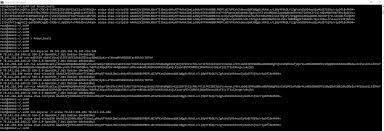In the age of digital transformation, cloud computing has become an essential part of every organization's IT infrastructure. The cloud offers several benefits such as scalability, flexibility, cost-effectiveness, and convenience. However, along with these benefits, cloud computing also brings along several security risks that need to be addressed. Cloud security solutions are designed to help organizations mitigate these risks and secure their cloud environments.
Cloud security solutions encompass a wide range of technologies and practices that are implemented to protect cloud-based systems, applications, and data from unauthorized access, theft, or corruption. These solutions typically include encryption, identity and access management, threat detection and prevention, and security monitoring.
Encryption is one of the most critical aspects of cloud security. It involves converting sensitive data into an unreadable format that can only be decrypted with the proper key. Encryption is used to protect data both in transit and at rest. In transit encryption ensures that data is protected while it is being transmitted between different systems or over the internet. At rest encryption ensures that data is protected while it is stored in the cloud.
Identity and access management (IAM) is another crucial component of cloud security. IAM solutions are designed to control and manage access to cloud-based resources. This involves ensuring that only authorized users can access sensitive data or applications. IAM solutions typically include features such as user authentication, role-based access control, and multi-factor authentication.
Threat detection and prevention is also an essential aspect of cloud security. These solutions are designed to identify and prevent security threats before they can cause any harm. Threat detection solutions typically use machine learning and artificial intelligence algorithms to detect patterns and anomalies in network traffic and system behavior. Threat prevention solutions include firewalls, intrusion prevention systems, and anti-malware solutions.
Security monitoring is another critical aspect of cloud security. It involves the continuous monitoring of cloud-based resources to detect and respond to security incidents in real-time. Security monitoring solutions typically include log analysis, event correlation, and incident response automation.
In addition to these core cloud security solutions, there are several other best practices that organizations can implement to enhance their cloud security posture. These include:
- Regularly updating and patching cloud-based systems and applications to address known vulnerabilities.
- Conducting regular security audits and assessments to identify potential security risks and vulnerabilities.
- Implementing a strong password policy and requiring users to change their passwords regularly.
- Using multi-factor authentication to add an extra layer of security to user accounts.
- Educating employees on cloud security best practices and the risks associated with cloud computing.
In conclusion, cloud security solutions are essential for any organization that is using the cloud to store, process, or transmit sensitive data or applications. These solutions provide a comprehensive set of tools and technologies to protect cloud-based resources from unauthorized access, theft, or corruption. By implementing best practices such as regular updates, security audits, and employee education, organizations can further enhance their cloud security posture and reduce the risk of security breaches.
For More Info:-





Comments